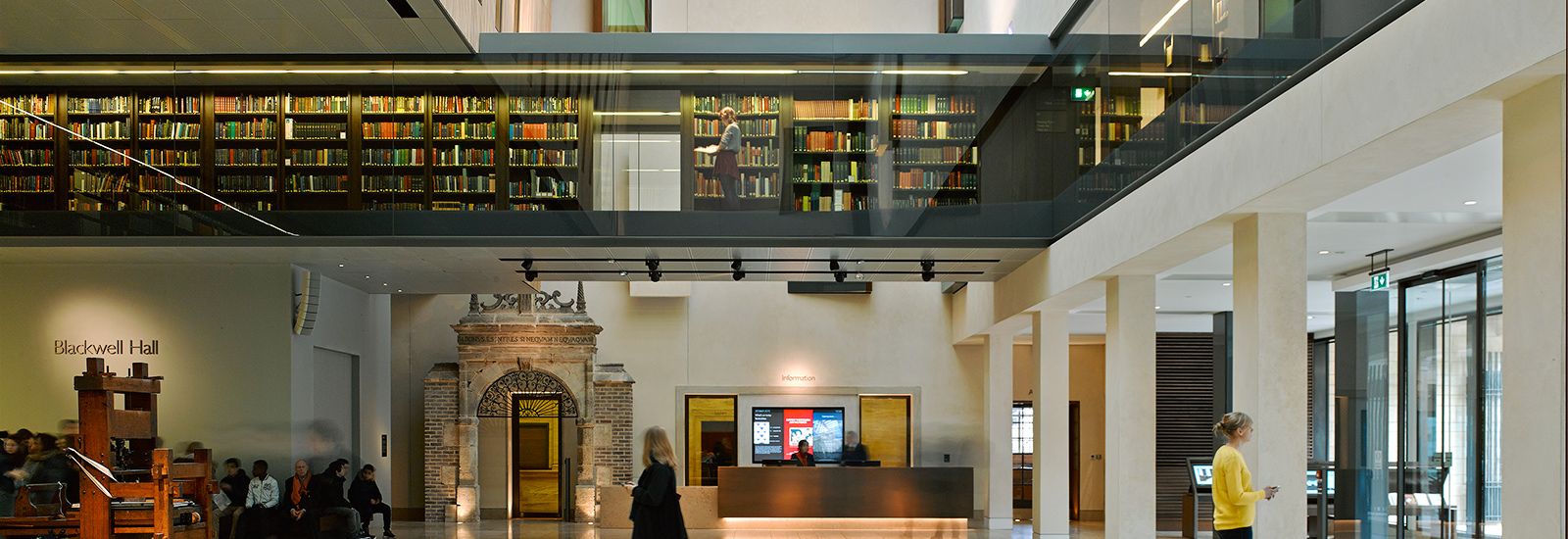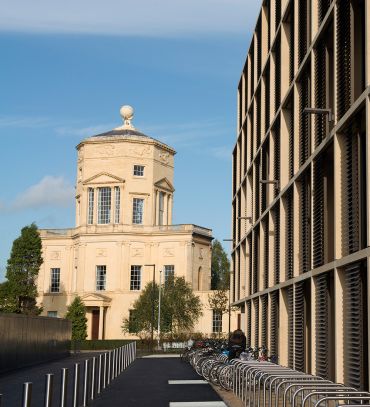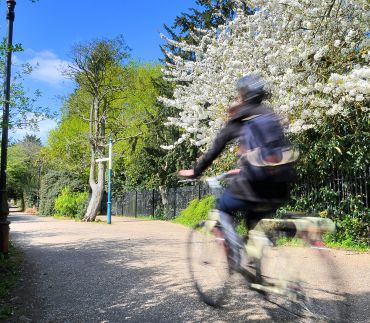
The environment
The built environment
The University of Oxford’s estate comprises 239 buildings, providing more than 600,000m2 of space – or more than 80 football pitches.
Its buildings include the historic Divinity School, built in 1424, and a significant portfolio of state-of-the-art architecture such as the Andrew Wiles Building (the Mathematical Institute) and the Blavatnik School of Government within the Radcliffe Observatory Quarter.
A further 153 properties in and around Oxford are managed commercially, including accommodation for graduate students, offices, warehouses and land – such as the 1,000 acres of Wytham Woods.
Strategy and investment
 The University’s Estate Strategy is a forward-thinking vision which takes a modern approach to multi-disciplinary thinking and working. Around £100 million per year is spent on capital projects and £2 billion will be invested in the estate over the next 10 years so that the University can continue to deliver its core aim of offering world-leading teaching and research in world-class buildings and facilities.
The University’s Estate Strategy is a forward-thinking vision which takes a modern approach to multi-disciplinary thinking and working. Around £100 million per year is spent on capital projects and £2 billion will be invested in the estate over the next 10 years so that the University can continue to deliver its core aim of offering world-leading teaching and research in world-class buildings and facilities.
Community consultation
The University is mindful of its responsibility towards the local community in ensuring that it is informed, consulted and involved where buildings and planning are concerned.
A strategy to deliver a best-practice approach has been developed comprising briefings and public consultation events so that neighbours, community leaders and interest groups have the opportunity, at an early stage, to view proposals and speak to the design team, consultants and University representatives. Their feedback is then taken into account before any planning application is submitted.
Recently the University has been invited to become a Client Partner of the prestigious Considerate Constructors’ Scheme. As a member, the University must abide by the Code of Considerate Practice covering five key areas, including respect for the local community.
Managing environmental impact
Reducing carbon emissions
The University has committed to delivering a 33% carbon emission reduction against a 2005/6 baseline. It has also signed up to the Low Carbon Oxford charter as a Pathfinder member, committing to work towards a 3% annual emission reduction over the next 10 years. Approximately £2 million is being invested annually in the existing University estate in order to achieve this reduction. Projects have been implemented or identified to deliver 50% of the reduction so far.
Sustainability
The University strives for high levels of sustainability in its construction programme. Since 2009 it has exceeded already stringent local planning requirements by targeting the Building Research Establishment Environmental Assessment Methodology ‘Excellent’ rating for all major projects.
This is the most widely internationally recognised construction assessment methodology. Recent ‘Excellent’ projects include the Mathematical Institute on the Radcliffe Observatory Quarter site and the Blavatnik School of Government.
The University is also supporting local efforts to develop the deployment of lower-carbon heating. With Oxford City Council it has cofunded a Building Research Establishment study into the feasibility of district heating across the city. The University already runs extensive district heating systems (where heat is distributed from a centralised location, using a network of highly insulated underground pipes) serving many of the buildings in its Science Area on South Parks Road.
The University and colleges buy electricity collectively and this has been principally (99%) derived from renewable sources since 2009.
More information about environmental sustainability at Oxford, including annual reports.
Transport strategy
 The University is the largest employer in the county and therefore has a significant stake in the transport infrastructure, both in terms of commuting and business travel within the city.
The University is the largest employer in the county and therefore has a significant stake in the transport infrastructure, both in terms of commuting and business travel within the city.
Its transport strategy includes a number of infrastructure improvements that aim to reduce the number of vehicles in the city and support walking, cycling and public transport.
The University is also working on the number of freight deliveries it stimulates in the congested city centre. It is developing measures with Oxford City Council to reduce this in order to improve air quality, reduce congestion and enable safer cycling.
Biodiversity
The University owns and manages sites with some of the highest biodiversity in the city, including not only its green spaces but also a nationally important population of swifts in the tower of the Museum of Natural History. A robust strategy is being developed to connect the management of these, with a view to developing additional higher-value habitats and the wildlife corridor connections between them.